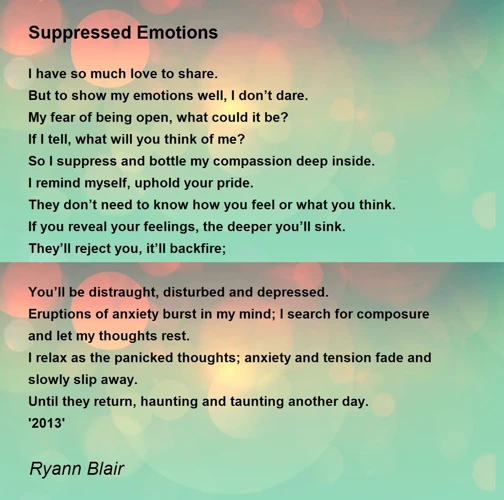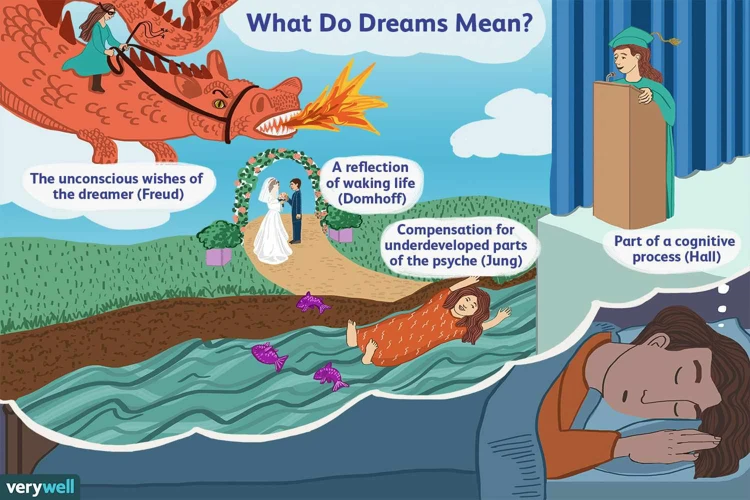The Significance of Dreams

Dreams have long been a subject of fascination and intrigue for humanity. They hold a deep significance in our lives, offering a window into our subconscious mind. While dreams may often seem bizarre or nonsensical, they are actually a complex interplay of our thoughts, emotions, and experiences.
One of the primary functions of dreams is to process and integrate our daily experiences. As we sleep, our brain organizes and consolidates memories, helping us make sense of the events and emotions we have encountered throughout the day. Dreams provide a safe space for our mind to explore and express these experiences, allowing us to process and understand them on a deeper level.
Additionally, dreams serve as a means of emotional release. During REM sleep, our brain is highly active, and the emotional centers of our brain become more active as well. This heightened emotional activity can result in vivid and intense dreams that allow us to release and work through suppressed emotions. For example, nightmares can serve as a symbolic representation of our fears and anxieties, providing an opportunity for emotional catharsis and growth.
Dreams can provide valuable insights into our unconscious desires, needs, and aspirations. Symbols and themes that appear in our dreams often carry deep symbolic meanings that may be connected to our suppressed emotions. By analyzing and deciphering these symbols, we can gain a better understanding of our hidden emotions and motivations.
To fully appreciate the significance of dreams, it is essential to engage in dream journaling. Keeping a dream journal allows us to capture the details and emotions of our dreams, enabling us to explore the connections between our dreams and our waking life. Through this practice, we can uncover recurring patterns, themes, and symbols, giving us a deeper understanding of ourselves and our emotional landscape. The act of writing down our dreams also helps improve our dream recall, ensuring that we capture and remember important insights that can aid in unlocking suppressed emotions.
Now that we understand the significance of dreams, let us delve deeper into the concept of suppressed emotions and how dream analysis can help us unlock and process these hidden parts of ourselves.
Understanding Suppressed Emotions

Suppressed emotions are feelings that we unconsciously push down and hide from our conscious awareness. These emotions can stem from various sources, such as past traumas, societal conditioning, or a fear of vulnerability. While it may seem beneficial to bury these emotions, doing so can have detrimental effects on our overall well-being.
Understanding suppressed emotions is crucial for our personal growth and emotional healing. When we suppress our feelings, they do not simply disappear. Instead, they find refuge in our subconscious mind, where they continue to influence our thoughts, actions, and behaviors. Over time, these buried emotions can manifest as physical symptoms, mental health issues, or disruptive patterns in our relationships.
Dreams play a significant role in helping us access and understand our suppressed emotions. Our dreams act as a gateway into our subconscious mind, bypassing the barriers we create in our waking life. They provide a safe space where our suppressed emotions can surface and be explored.
Through dream analysis, we can uncover the hidden layers of our emotions that we may have consciously or unconsciously avoided. Dreams often bring these repressed feelings to the forefront, allowing us to confront and process them in a symbolic and metaphorical way. For example, a dream about drowning may symbolize feelings of being overwhelmed or suffocated by suppressed emotions.
While analyzing dreams can help us unlock these hidden emotions, it is important to approach the process with compassion and self-care. It may take time and patience to fully understand the significance and impact of our suppressed emotions. Engaging in practices such as dream journaling, therapy, or seeking support from a dream therapist can provide valuable guidance and assistance on this journey of emotional exploration.
Now that we have explored the significance of dreams and the concept of suppressed emotions, let us delve into the role dream analysis plays in helping us unlock and process these emotions in greater detail.
The Role of Dream Analysis

Dream analysis plays a crucial role in unlocking and understanding our suppressed emotions. By examining the symbols, themes, and emotions present in our dreams, we can gain powerful insights into our subconscious mind. Interpreting the elements of our dreams allows us to access and process emotions that we may have consciously or unconsciously suppressed. It provides us with a unique opportunity to explore the depths of our psyche and uncover hidden truths about ourselves.
One aspect of dream analysis involves interpreting the symbols and themes present in our dreams. Symbols act as a language of the unconscious, representing our deepest emotions and desires. By deciphering these symbols, we can uncover the underlying emotional meanings and connections.
Another key aspect of dream analysis is exploring dream patterns and recurring motifs. Certain symbols or scenarios may appear frequently in our dreams, indicating ongoing emotional themes or unresolved issues. By identifying and analyzing these patterns, we can gain a better understanding of the emotions and experiences that we may have suppressed in our waking life.
Dream analysis helps us recognize emotional triggers that may be present in our dreams. These triggers can provide valuable insights into our unresolved traumas and emotional wounds. By acknowledging and processing these triggers, we can begin to heal and release the emotional blockages that have been holding us back.
Whether through journaling and dream recall, utilizing dream dictionaries, or working with a dream therapist, dream analysis offers a powerful tool for unearthing suppressed emotions and fostering emotional growth and healing. It allows us to tap into our subconscious mind and gain a deeper understanding of ourselves, ultimately leading to greater self-awareness and emotional well-being.
Now that we have explored the role of dream analysis, let us delve into the various methods and techniques for analyzing dreams.
Interpreting Symbols and Themes
- Symbolism plays a crucial role in dream analysis, as symbols serve as a language of the subconscious mind. Dreams are often filled with vivid and metaphorical symbols that carry deeper meanings and insights into our suppressed emotions. By paying close attention to these symbols, we can uncover the hidden messages that our subconscious is trying to communicate.
- When interpreting symbols and themes in dreams, it is important to approach them with an open mind and consider their personal significance. While certain symbols may have universal meanings, such as water representing emotions or birds symbolizing freedom, the interpretation ultimately depends on the individual’s unique experiences and associations.
- To begin interpreting symbols and themes in dreams, it is helpful to create a dream dictionary or reference guide. This can be a personal collection of symbols and their meanings, based on your own experiences and research. A dream dictionary can serve as a useful tool in deciphering the symbolism in your dreams and gaining insights into your suppressed emotions.
- Another aspect of interpreting symbols and themes is looking for recurring motifs in your dreams. Pay attention to any symbols or themes that frequently appear across multiple dreams, as these hold significant meaning and may reflect underlying emotions or issues that need to be addressed.
- Dream analysis is not about finding a one-size-fits-all interpretation for each symbol or theme. It requires introspection, self-reflection, and exploring the emotional connections to the symbols. For example, a dream about flying may represent a feeling of liberation for one person, while for another person it may symbolize a desire to escape from a certain situation.
By engaging in a thoughtful and introspective process of interpreting symbols and themes in our dreams, we can gain valuable insights into our suppressed emotions. This understanding allows us to address these emotions and work towards healing and personal growth. Dream analysis offers us a doorway into the hidden realms of our psyche, unlocking the wealth of knowledge and wisdom that exists within.
Exploring Dream Patterns and Recurring Motifs
- Symbolic Representation: When exploring dream patterns and recurring motifs, it is important to pay attention to the symbols that appear consistently in our dreams. These symbols often hold deep personal meanings and can provide valuable insights into our emotional state. For example, if you regularly dream of being chased, it could symbolize that you are running away from something in your waking life. By analyzing these symbols and their associated emotions, we can begin to decipher the hidden messages our dreams are trying to convey.
- Themes and Storylines: Another aspect to explore is the recurring themes and storylines in our dreams. Are there specific situations or scenarios that repeat themselves? For instance, if you frequently dream of being unprepared for an exam, it may indicate underlying feelings of anxiety or fear of failure in your waking life. By identifying these recurring themes, we can gain a deeper understanding of the emotions and experiences that are influencing our subconscious mind.
- Emotional Imprints: Paying attention to the emotions evoked by these dream patterns and recurring motifs can be highly revealing. Our dreams have the power to tap into suppressed emotions that we may have buried deep within ourselves. For example, if you repeatedly dream of being abandoned or betrayed, it could signify unresolved feelings of abandonment or trust issues in your waking life. By acknowledging and exploring these emotions, we can begin the process of healing and release.
- Pattern Recognition: Examining dream patterns over an extended period can bring clarity to the underlying emotions and unresolved issues that we may be grappling with. When we notice consistent themes or symbols appearing in our dreams, it serves as a cue to delve deeper into these aspects of our psyche. By recognizing these patterns, we can start to make connections between our dreams and our waking life, ultimately leading to greater self-awareness and a more profound understanding of our suppressed emotions.
Exploring dream patterns and recurring motifs can be a powerful tool in unlocking suppressed emotions. It allows us to unravel the deeper layers of our subconscious mind, unveiling insights and truths about ourselves that may have remained hidden. By delving into these patterns and motifs, we can gain a fresh perspective on our emotions, experiences, and personal growth, helping us navigate through any emotional blockages that may be holding us back.
If you’re struggling with emotional release and find that nightmares are recurring in your dreams, you may want to explore the concept of emotional release through nightmares. It provides a unique pathway to understand and process repressed emotions.
Now that we have explored the significance of dream patterns and recurring motifs, let us continue our journey towards uncovering suppressed emotions by understanding how to recognize emotional triggers within our dreams.
Recognizing Emotional Triggers
Within the realm of dream analysis, recognizing emotional triggers is a crucial step towards understanding and unlocking suppressed emotions. Emotional triggers are specific experiences, situations, or stimuli that evoke intense emotional responses within us. In dreams, these triggers can manifest in a variety of ways, such as recurring themes or symbols that consistently evoke strong emotions.
By paying close attention to these emotional triggers in our dreams, we can gain valuable insights into our suppressed emotions. For example, if a particular symbol consistently elicits fear or anxiety in our dreams, it may indicate that we are suppressing these emotions in our waking life. These triggers serve as signposts, guiding us towards key emotional areas that require attention and exploration.
Recognizing emotional triggers in dreams involves being mindful of our emotional reactions and the accompanying sensations. It requires us to attune ourselves to the emotions that arise within us during and after the dream experience. By carefully observing and acknowledging these emotional responses, we can start to unravel the underlying suppressed emotions that they represent.
It is important to note that emotional triggers in dreams can sometimes be linked to past traumas or unresolved issues. Dream analysis allows us to delve into these emotional triggers and explore their connections to our waking life experiences. Through this process, we can begin to address and heal these unresolved emotional wounds.
One powerful technique to aid in recognizing emotional triggers is through dream journaling. By consistently recording and reflecting on our dreams, we can identify recurring symbols or themes that elicit strong emotions. This process helps us uncover the patterns that exist within our dreams and gives us a better understanding of the emotional triggers that are present.
As we become more skilled at recognizing emotional triggers in our dreams, we can apply this awareness to our daily lives. We can start to identify situations, experiences, or interactions that elicit similar emotional responses as our dream triggers. This recognition provides valuable self-reflection and the opportunity to address and heal suppressed emotions in our waking life as well.
By recognizing emotional triggers in our dreams and connecting them to our waking life experiences, we can gain profound insights into our suppressed emotions and begin the journey towards emotional healing and growth.
Methods for Analyzing Dreams

There are several effective methods for analyzing dreams that can help us gain deeper insights into our suppressed emotions. One popular method is journaling and dream recall, where we keep a dedicated journal to record our dreams upon waking. By jotting down the details, emotions, and symbols experienced in our dreams, we can begin to unravel their hidden meanings and connections to our waking life. This practice not only improves our ability to remember dreams, but it also allows us to track patterns and recurring motifs that may provide valuable clues about our suppressed emotions. Another useful tool for dream analysis is the utilization of dream dictionaries. Dream dictionaries offer interpretations of common symbols and themes, aiding us in deciphering the messages our dreams are trying to convey. They can provide guidance and insights into the emotional interpretations of our dreams. Lastly, working with a dream therapist who specializes in dream analysis can be highly beneficial. A dream therapist has the expertise to guide us through the interpretation of our dreams and help us uncover the suppressed emotions and unresolved traumas they may represent. This professional guidance can provide support and facilitate the process of emotional healing through dream analysis.
Journaling and Dream Recall
Journaling and dream recall are powerful tools in the realm of dream analysis that can help us unlock suppressed emotions and gain deeper insights into ourselves. By engaging in the practice of dream journaling, we create a record of our dreams that allows us to revisit and analyze them later.
When starting a dream journal, it is important to keep it near our bed and make a commitment to record our dreams as soon as we wake up. Dreams are fleeting and easily forgotten, so capturing them in writing helps improve our dream recall. By jotting down the details, emotions, symbols, and themes of our dreams, we can preserve the essence of each dream and the associated emotions.
As we regularly journal our dreams, we begin to notice patterns and recurring motifs that appear across multiple dreams. These patterns can provide valuable insights into our suppressed emotions and recurring themes in our lives. For example, we may notice that we often dream about being chased, which could be a manifestation of anxiety or a fear of confrontation.
When reviewing our dream journal entries, it is essential to pay attention to the emotions that arise as we recall the dream. Emotions serve as powerful indicators of our internal state, allowing us to tap into suppressed feelings that may have been hidden in our waking life. By identifying and acknowledging these emotions, we can begin the process of releasing and healing.
Dream recall and journaling can also enhance our understanding of the connection between our dreams and our emotions. We may discover that certain symbols or themes in our dreams consistently evoke specific emotions. For example, the presence of water in our dreams may be correlated with feelings of calmness or tranquility. Recognizing these patterns can provide valuable insights into our emotional landscape and help us proactively work through suppressed emotions.
To make the most of our dream journaling practice, it is beneficial to regularly review and reflect on our dream entries. By revisiting past dreams, we can identify recurring themes and symbols that may have escaped our initial analysis. This ongoing reflection deepens our understanding of our dreams and helps us unlock and process the suppressed emotions they contain.
By integrating dream journaling and recall into our daily routine, we can harness the power of our dreams to unlock suppressed emotions, gain self-awareness, and embark on a journey of self-discovery.
Utilizing Dream Dictionaries
Utilizing dream dictionaries can be a valuable tool in the process of dream analysis. Dream dictionaries provide a comprehensive guide to the interpretation of various symbols and objects that commonly appear in dreams. These symbols can offer insights into the underlying emotions and messages that our subconscious mind is trying to communicate.
When using a dream dictionary, it is important to approach it with an open mind and use it as a reference rather than an absolute interpretation. Dreams are highly personal, and the meanings of symbols can vary depending on the individual’s experiences and cultural background.
One way to effectively utilize a dream dictionary is to start by examining the emotions and themes present in the dream. By identifying the dominant emotions, such as fear, joy, or sadness, we can then look up the corresponding symbols in the dream dictionary to gain a deeper understanding of the underlying emotions and their significance.
For example, if you dreamt of being chased, you can use a dream dictionary to explore the potential meanings of being pursued. It may symbolize feelings of anxiety, stress, or a need to confront and overcome challenges in your waking life. By consulting a dream dictionary, you can uncover the possible interpretations and gain insights into the suppressed emotions or unresolved issues that the dream is reflecting.
It is important to note that while dream dictionaries can provide helpful insights, they should not be solely relied upon. Dreams are highly symbolic and personal, and the true meaning can often be found through self-reflection and personal interpretation.
By combining the use of dream dictionaries with other techniques such as dream journaling (link to dream journaling) or exploring dream symbol and emotion interpretation (link to dream symbol and emotion interpretation) methods, we can gain a more holistic view of our dream experiences and uncover the deeper emotions and messages they hold.
Working with a Dream Therapist
For those seeking a more guided and in-depth approach to dream analysis, working with a dream therapist can be highly beneficial. Dream therapists specialize in helping individuals explore and interpret the symbolism and meaning behind their dreams to unlock suppressed emotions and gain a deeper understanding of themselves.
When working with a dream therapist, the process typically involves regular sessions where you discuss and analyze your dreams together. Here are some key aspects of working with a dream therapist:
- Creating a Safe and Supportive Environment: A dream therapy session typically begins with the therapist creating a safe and non-judgmental space for you to share your dreams and emotions. This sense of safety and support is crucial for allowing suppressed emotions to surface and be explored.
- Active Dream Exploration: During the session, the dream therapist will guide you in exploring the symbols, themes, and emotions present in your dreams. They will help you delve deeper into the meaning behind these elements and how they relate to your suppressed emotions.
- Encouraging Self-Reflection: A dream therapist will encourage you to reflect on your dreams and draw connections between the dream imagery and your waking life experiences. This process of self-reflection helps in gaining insights into your suppressed emotions and how they manifest in different areas of your life.
- Psychological Techniques: Dream therapists may also employ various psychological techniques such as active imagination, role-play, or dream reenactment to help you further explore and understand the emotions and messages within your dreams.
- Integration and Healing: Through the guidance and support of a dream therapist, you can gain a deeper understanding of your suppressed emotions and begin the process of integration and healing. The therapist can assist you in finding healthy ways to express and release these emotions, leading to personal growth and emotional well-being.
Working with a dream therapist can be a transformative experience, allowing you to unlock suppressed emotions that may have been holding you back. It provides a dedicated space to explore the rich symbolism of your dreams and gain valuable insights into your emotional landscape.
As we continue to explore different methods for analyzing dreams, we will further uncover how dream analysis can help unearth suppressed emotions and lead to emotional healing and personal growth.
Unearthing Suppressed Emotions through Dream Analysis

Identifying Repressed Feelings
Uncovering Unresolved Traumas
Unresolved traumas have a profound impact on our emotional well-being, often leading to the suppression of painful emotions and memories. These suppressed emotions can manifest in various ways, affecting our thoughts, behaviors, and relationships. Dream analysis can be a powerful tool in uncovering and processing these unresolved traumas, allowing us to heal and move forward.
In dreams, unresolved traumas may resurface in the form of recurring themes, distressing symbols, or vivid reenactments of the traumatic event. These dreams act as a gateway to the unconscious mind, offering an opportunity to confront and release the emotions associated with the trauma.
By paying attention to the details of these dreams, such as the emotions felt, the characters involved, and the overall atmosphere, we can gain insights into the emotional impact of the unresolved trauma. This process requires a delicate balance of self-reflection and emotional support. It can be helpful to work with a trained therapist experienced in dream analysis to guide us through this introspective journey.
During dream analysis, we may uncover hidden emotions such as fear, anger, sadness, or guilt that have been repressed as a result of the trauma. The act of acknowledging and expressing these emotions within the safe space of a dream allows us to process and release them in a controlled and supportive environment.
Uncovering unresolved traumas through dream analysis is a gradual process that requires patience and self-compassion. It is important to remember that healing takes time, and each individual’s journey is unique. Engaging in dream analysis with the intention of unearthing unresolved traumas should always be done under the guidance of a professional to ensure emotional safety and provide the necessary tools for healing.
Releasing Emotional Blockages
The process of dream analysis can be a powerful tool in releasing emotional blockages that we may be carrying within us. Emotional blockages are often the result of past traumas, negative experiences, or unresolved emotions that we have buried deep within our subconscious mind. These blockages can manifest as physical or mental discomfort and can prevent us from fully experiencing and expressing our emotions.
When we engage in dream analysis, we allow ourselves to explore the symbolic language of our dreams. Dreams can serve as a bridge between our conscious and unconscious mind, providing us with valuable insights into our emotions and inner conflicts. By examining the symbols and themes in our dreams, we can begin to unravel the layers of suppressed emotions that have been holding us back.
During the process of dream analysis, we may come across recurring dreams or motifs that point to specific emotional blockages. For example, a recurring dream about being trapped in a small, confined space may symbolize feelings of entrapment or suffocation in our waking life. By recognizing these patterns and delving deeper into their meaning, we can start to access and release the emotions that have been suppressed.
In some cases, our dreams may present us with challenging or uncomfortable scenarios that reflect unresolved traumas or deeply buried emotions. These dreams can be an invitation to confront and process these experiences in a safe and controlled environment. By analyzing and working through these dreams, we can begin the process of healing and releasing the emotional blockages that have been holding us back.
Releasing emotional blockages through dream analysis involves acknowledging and accepting the emotions that arise during the process. It may be necessary to seek support from a therapist or counselor who specializes in dream work to navigate through the intense emotions that can arise. This support can provide guidance and help us develop healthy coping mechanisms as we release these suppressed emotions.
Ultimately, by engaging in dream analysis and actively working towards releasing emotional blockages, we can create space for emotional healing and growth. Releasing these suppressed emotions can lead to a greater sense of self-awareness, emotional well-being, and an enhanced ability to navigate and process our emotions in our daily lives.
Benefits of Unlocking Suppressed Emotions

Unlocking suppressed emotions through dream analysis can have a profound impact on our overall well-being and personal growth. By tapping into these hidden aspects of ourselves, we can experience a range of benefits:
- Emotional Release: One of the primary benefits of unlocking suppressed emotions is the opportunity for emotional release. When we acknowledge and process these buried emotions, we can experience a sense of relief and liberation. Dream analysis allows us to bring these emotions to the surface and work through them in a safe and controlled environment.
- Self-Awareness and Insight: Exploring and understanding our suppressed emotions provides valuable self-awareness and insight. By recognizing and acknowledging our buried feelings, we gain a deeper understanding of ourselves and our behaviors. This self-awareness facilitates personal growth and empowers us to make positive changes in our lives.
- Improved Mental Health: Suppressing emotions can take a toll on our mental health, leading to issues such as anxiety, depression, and stress. Unlocking suppressed emotions through dream analysis can alleviate these mental health challenges by allowing us to confront and process our emotions head-on.
- Enhanced Relationships: Our suppressed emotions can affect our relationships, often leading to misunderstandings and conflicts. By understanding and addressing these emotions, we can improve our communication skills and build healthier and more fulfilling connections with others.
- Increased Resilience: When we unlock suppressed emotions, we become more resilient to future challenges. By facing and processing difficult emotions, we develop emotional strength and the ability to navigate life’s ups and downs with greater ease.
Unlocking suppressed emotions through dream analysis is a powerful tool for personal growth and emotional healing. By embracing our dreams and delving into their hidden meanings, we can unlock the door to a deeper understanding of ourselves and experience transformative benefits.
Applying Dream Analysis in Daily Life
Self-Reflection and Personal Growth
Self-reflection and personal growth are integral aspects of our journey towards self-discovery and emotional well-being. Dream analysis provides us with a powerful tool to engage in this process, as it allows us to explore the hidden corners of our unconscious mind and uncover suppressed emotions. By regularly analyzing our dreams and reflecting on their symbolism and themes, we can gain valuable insights into our innermost desires, fears, and aspirations.
One of the key benefits of self-reflection through dream analysis is the opportunity for increased self-awareness. As we delve into the meanings behind our dreams, we become more attuned to our emotions, thoughts, and behaviors in our waking life. This heightened level of self-awareness enables us to identify patterns, triggers, and emotional blockages that may be holding us back from achieving personal growth and fulfillment.
Dream analysis facilitates the exploration of unresolved issues and traumas that may have been buried deep within our subconscious. Dreams often serve as a vehicle for working through these unresolved emotions and experiences. By recognizing and processing these suppressed feelings, we can release emotional blockages and begin the healing process, leading to personal growth and transformation.
Engaging in self-reflection through dream analysis also encourages introspection and introspection,and introspection sparking creative thinking and problem-solving abilities. Dreams have the ability to present us with alternative perspectives and solutions to our daily challenges. By analyzing the symbols and themes in our dreams, we can gain fresh insights and innovative approaches to navigating our personal and professional lives.
Dream analysis allows us to tap into our intuitive wisdom. Dreams often provide us with intuitive guidance or messages from our higher self. By paying attention to these messages and incorporating them into our lives, we can make more aligned and authentic choices that support our personal growth and fulfillment.
The practice of self-reflection through dream analysis offers us a unique and powerful avenue for personal growth and transformation. By delving into the depths of our dreams, we can gain a deeper understanding of ourselves, heal suppressed emotions, and uncover our true potential.
Enhancing Emotional Intelligence
Enhancing emotional intelligence is one of the significant benefits of applying dream analysis in our daily lives. Emotional intelligence refers to our ability to recognize and understand our own emotions and the emotions of others, as well as our capacity to manage and express emotions effectively.
Through dream analysis, we can gain valuable insights into our emotional landscape, helping us develop a deeper understanding of our own emotions. Dreams often serve as a gateway to our subconscious mind, revealing underlying emotions and unresolved issues that may be influencing our daily lives. By analyzing the emotions we experience in our dreams and connecting them to our waking life experiences, we can identify patterns and trends in our emotional responses.
Dream analysis allows us to explore complex emotions that we may have difficulty expressing or understanding in our waking life. Dreams provide a safe space to confront and process these emotions, enabling us to become more emotionally self-aware and attuned to our inner world. By recognizing and working through these suppressed emotions, we can enhance our emotional intelligence by improving our ability to identify, regulate, and communicate our emotions.
Engaging in dream analysis also cultivates empathy and understanding towards others’ emotions. As we explore our own emotional depths through dream analysis, we develop a greater sense of compassion and empathy, as we come to recognize the universal nature of human emotions. This increased empathy allows us to better connect with others and understand their emotional experiences, enhancing our overall emotional intelligence in interpersonal relationships.
Ultimately, by applying dream analysis to enhance our emotional intelligence, we can navigate our emotions more effectively, make healthier choices, and build more fulfilling relationships. Dream analysis offers a unique and insightful approach to self-discovery and personal growth, helping us unlock the full potential of our emotional intelligence.
Improving Relationships
Improved emotional intelligence and self-awareness, as a result of dream analysis, can greatly enhance our relationships with others. By gaining a deeper understanding of our own emotions and triggers, we become more empathetic towards the emotions of those around us.
When we are aware of and actively working on our own emotional growth, we are better equipped to handle disagreements and conflicts within our relationships. We can approach these situations with greater patience, understanding, and compassion, instead of reacting impulsively or defensively.
Dream analysis can also shed light on patterns and recurring themes in our dreams that may be connected to our relationships and interactions with others. This insight can help us recognize unhealthy dynamics or unresolved issues that we may have been unaware of or avoiding. By addressing these underlying issues, we can work towards healthier and more fulfilling relationships.
Additionally, dream analysis can provide a safe space for exploring our expectations, desires, and fears within relationships. Dreams often reflect our deepest longings and anxieties, allowing us to gain clarity on what we truly want and need from our relationships. This understanding enables us to communicate more effectively and assertively, fostering healthier and more fulfilling connections.
Ultimately, by applying dream analysis to our relationships, we can become more attuned to our own emotions and growth, leading to stronger and more meaningful connections with others. The journey of self-discovery and emotional healing sparked by dream analysis can have a profound positive impact on our relationships, creating a strong foundation for love, trust, and understanding.
Conclusion
In conclusion, dreams hold immense significance in our lives, acting as portals to our deepest emotions, desires, and fears. They provide us with valuable insights into our subconscious mind and help us process and integrate our daily experiences. Through dream analysis, we can unravel suppressed emotions and gain a better understanding of ourselves.
By interpreting symbols and themes, exploring dream patterns, and recognizing emotional triggers, we can uncover hidden truths about our emotional well-being. Methods such as journaling, utilizing dream dictionaries, and working with a dream therapist can further enhance our ability to analyze and understand our dreams.
Unearthing suppressed emotions through dream analysis allows us to identify repressed feelings, uncover unresolved traumas, and release emotional blockages. This process can lead to numerous benefits, including personal growth, enhanced emotional intelligence, and improved relationships.
Applying dream analysis techniques in our daily life can empower us to navigate our emotions and experiences with greater self-awareness. By engaging in self-reflection, enhancing our emotional intelligence, and improving our relationships, we can truly harness the power of dream analysis to unlock and process our suppressed emotions.
So, next time you have a vivid dream, pay attention to the symbols, themes, and emotions present. Your dreams have the potential to provide transformative insights and bring about healing and growth in your emotional journey.
Frequently Asked Questions
Why do we dream?
Dreams serve various purposes, including processing and integrating our daily experiences, releasing suppressed emotions, and providing insights into our unconscious desires and motivations.
Are dreams meaningless?
No, dreams are not meaningless. While their symbolism may be subjective, dreams often reflect our thoughts, emotions, and experiences, and can offer important insights into our inner psyche.
Can dreams help us understand suppressed emotions?
Yes, dreams can be a powerful tool for understanding and unlocking suppressed emotions. Symbols, themes, and recurring motifs in dreams can provide clues about our hidden emotions and help us process and release them.
What is dream analysis?
Dream analysis is the process of interpreting and understanding the symbols, themes, and emotions within our dreams. It involves analyzing the various elements of a dream to gain insights into our subconscious mind and emotional well-being.
How can dream journaling impact our emotions?
Dream journaling allows us to explore the connections between our dreams and our waking life. By capturing the details and emotions of our dreams, we can uncover patterns, themes, and symbols that provide a deeper understanding of our emotions and how they relate to our daily experiences.
Is there a link between dreams and our emotional state?
Yes, there is often a link between our dreams and our emotional state. Dreams can reflect our current emotional state, as well as help us process and release suppressed emotions that may be affecting us.
Can dream analysis be done without professional help?
Absolutely! While working with a dream therapist can be beneficial, dream analysis can also be done individually. Keeping a dream journal, using dream dictionaries, and studying the symbolism of dreams can all aid in self-analysis and understanding.
Are there any benefits to unlocking suppressed emotions?
Unlocking suppressed emotions can have numerous benefits, including increased self-awareness, personal growth, improved emotional well-being, and the ability to form healthier relationships.
Can dream analysis improve our emotional intelligence?
Yes, dream analysis can help improve our emotional intelligence. By gaining a deeper understanding of our emotions and emotional triggers through dream analysis, we can develop greater self-awareness and interpersonal skills.
How can dream analysis improve our relationships?
Dream analysis can improve relationships by helping us gain insights into our subconscious desires and emotions. By understanding ourselves better, we can communicate more effectively, empathize with others, and cultivate healthier connections.








